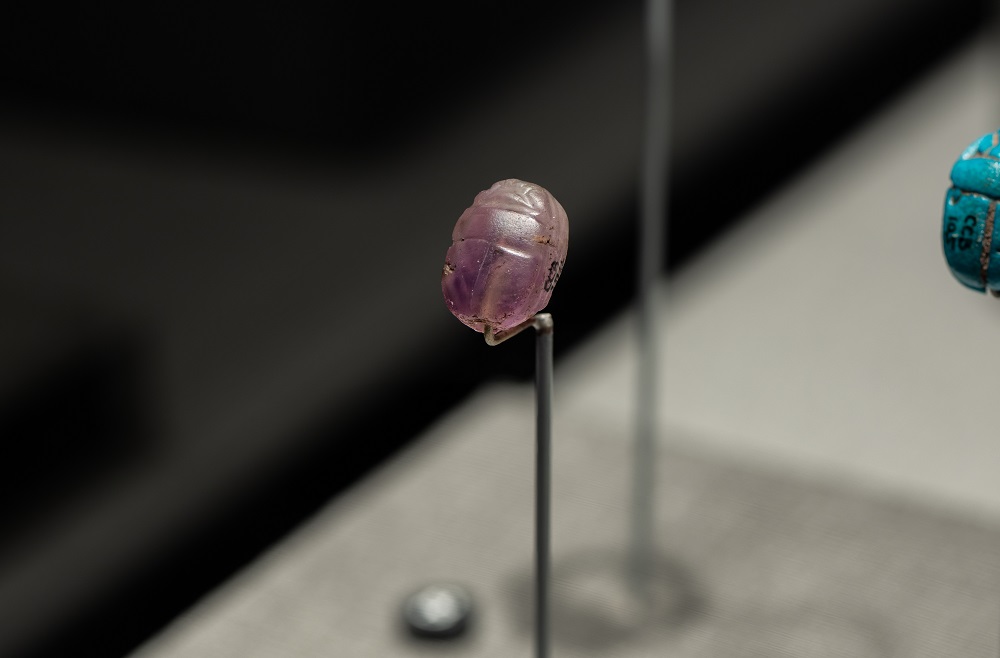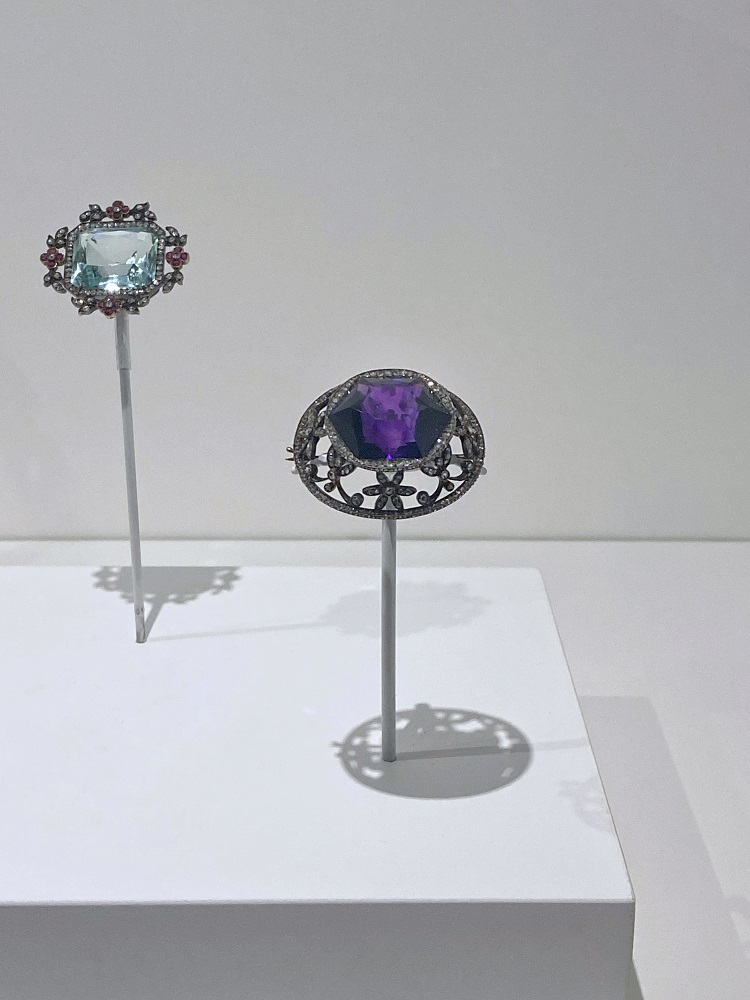Amethyst is a mineral known for its eye-grabbing violet hue. There are many examples of this beautiful sight within our Cullen Hall of Gems and Minerals, but such a cultural influence can be found in other corners of the museum. February’s birthstone has many tales to tell.

One of the most spectacular pieces in the collection is our large upright amethyst geode. This one and its partner by the gift shop elevator are both from Brazil which is known for its large amethyst geodes. Most geodes are formed in volcanic rock. They start out as bubbles caused by trapped gas in molten lava that eventually cools and solidifies. Over time these cavities are filled with mineral rich water rich from the surrounding rock. Over time the water evaporates and leaves behind the minerals in the form of beautiful crystals.
The purple coloring comes from iron molecules present during crystal growth. The hue of purple varies and can be affected by heat and radiation. Amethyst is a variation of quartz which is usually clear to white, but different colors and crystal structure have different names. For example, citrine is the yellow/orange version, rose quartz is pink, and even flint, aka chert, is a type of micro-crystalline quartz which comes in many colors.

The gem itself is not particularly rare but the deep violet coloration has made it sought after for millennia. Ancient Egyptians valued amethyst. Our collection includes a small scarab mined from a site called Wadi el-Hudi in Upper (southern) Egypt. Amethyst was prized by pharaohs and given as special gifts to courtiers and princesses. It was said to have magical properties that invoked love and attraction.
The name amethyst comes from the Greek “amethystos,” literally translated means “not intoxicated.” In the ancient world, people would place this crystal in their goblets with the belief that it would keep them from getting drunk. Thus it is associated with Dionysus (Greek) and Bacchus (Roman), the gods of wine and parties.

Some of the world’s finest quality amethyst comes from the Ural Mountains of Russia. As part of our McFerrin Fabergé Collection, the museum is home to one such fine gem. The deep purple color and flash of red are distinctive of Russian amethyst.
Stay tuned for more science and stories about the remaining birthstones and where to find them in our Halls!

